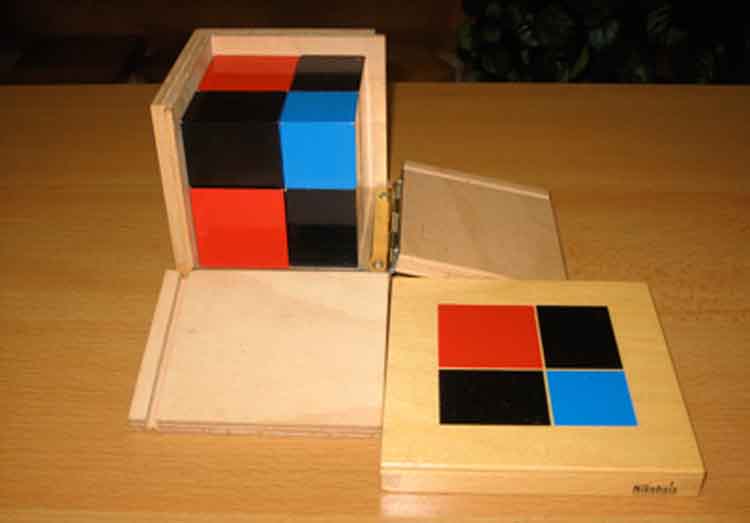Binomial Cube
The Montessori Binomial Cube is a part of the sensorial curriculum area. The cloth is created from eight wood blocks which, while prepare correctly, create a dice. These blocks healthy right into a herbal wooden box, which has the finished dice painted at the lid. The blocks are color coded, and exceptional sizes, and healthy collectively to create a binomial pattern, representing the dice of numbers, (a + b), or tens plus units. The dice itself bodily represents a mathematical equation, which is (a + b)³ = (a + b) (a + b) (a + b) = a³ + 3a²b + 3ab² + b³.
Purpose
In those early stages, the reason of the cloth is much less targeted at the complicated arithmetic at the back of the cloth, and as a substitute is to offer a mission for a toddler’s capacity to discover styles and relationships among the blocks. Due to this reason, the Binomial Cube falls into the sensorial curriculum area. This cloth is a precursor for extra complicated mathematical principles such as fractions and algebra. If your toddler maintains to study the use of the Montessori philosophy, the Binomial Cube is used in the number one years to apprehend and enjoy algebraic principles.
Presentation
1) Before introducing the material to the child, ensure the Binomial Cube has been out away correctly.
2) Remove the lid of the box so the painting of the completed cube is facing up
3) Pull down one side of the box at a time and gently remove all the blocks from the box one at a time.
4) Sort the blocks by colour order. Make sure to leave an inch of space so that the colour can be clearly seen.
5) Tell the child you are now going to build the cube and using the lid of the box, begin with the red block.
6) Point to a red side of the placed block and say you need to match this colour.
7) Find a matching block and place it in the correct spot.
8) Continue to work in this manner until the first level is complete. The top pattern should match the lid of the box.
9) Placing a hand on the first level show the child that it is flat.
10) Now tell the child you will move this layer into the box.
11) Once the first level is in the box, begin the second level on top, using the lid of the box as reference. If the child has caught on the pattern allow them to assist.
12) When the second layer is complete, again place a hand to show the child that it is flat.
13) Close the box, one side at a time and then replace the lid.
14) Invite the child to work with the binomial cube.

